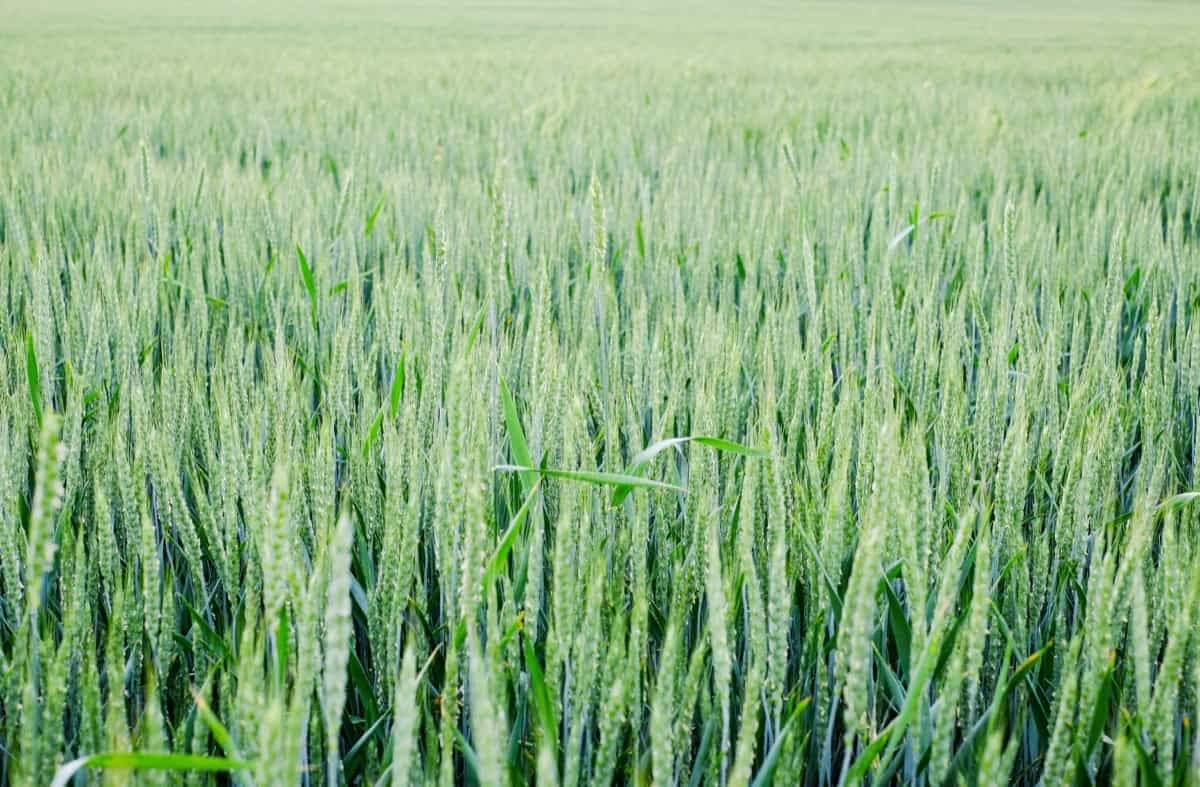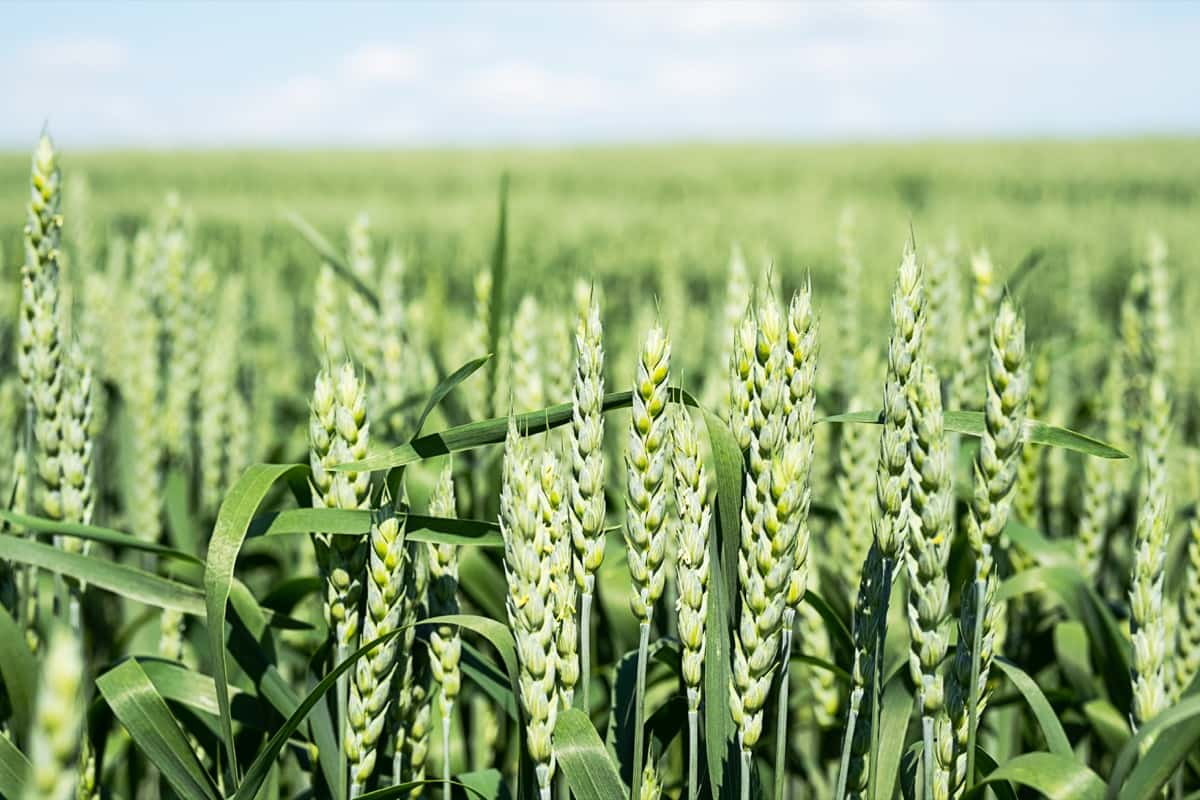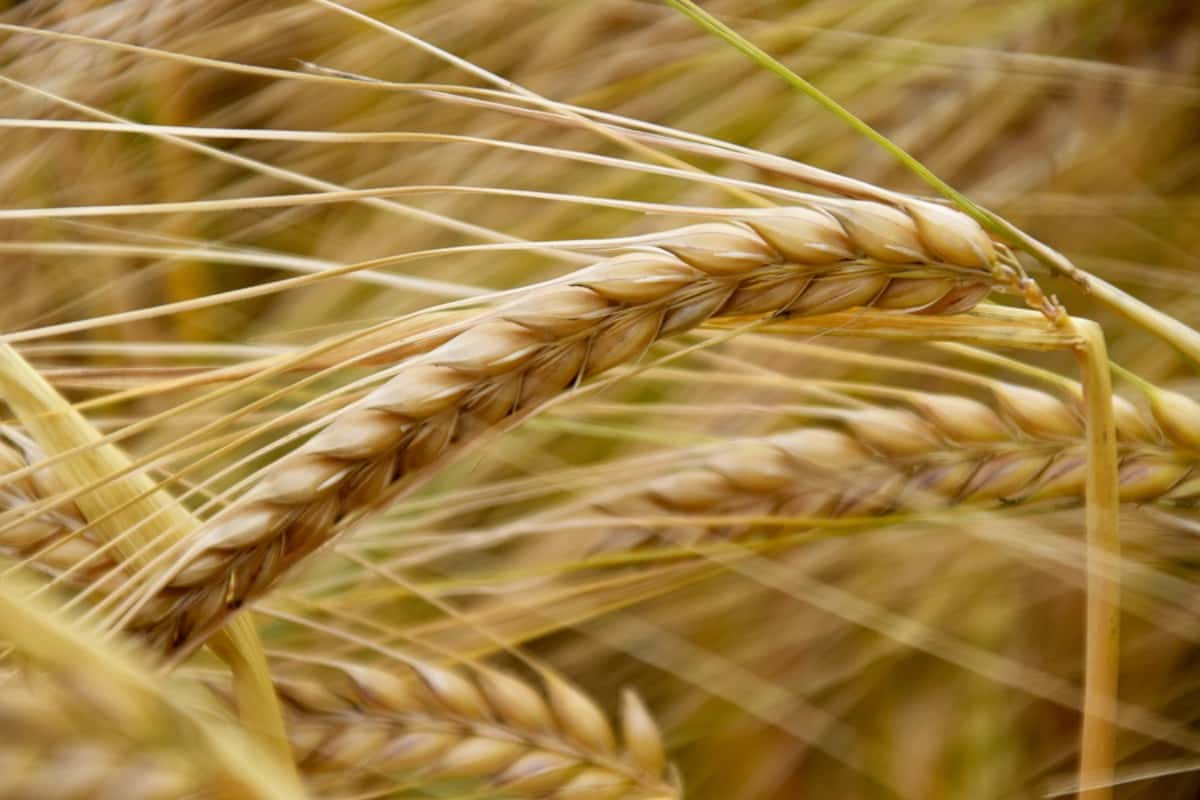Wheat is a member of the grass family, Poaceae. It plays an important role in global food security and nourishes millions of people worldwide. To ensure its healthy growth and optimal yield, fertilizer becomes an indispensable ally for Wheat farmers.

Wheat Fertilizer Requirements and Recommendations
Optimal Nitrogen Application Rates for Wheat
Nitrogen is a vital nutrient for Wheat plants, crucial to their growth and development. Additionally, considering the growth stage of Wheat is crucial when applying nitrogen fertilizer. Splitting applications throughout different stages (e.g., during tillering and heading) allows for better nutrient uptake by the plants and reduces losses through leaching or volatilization.
Finding the optimal balance between providing enough but not excessive amounts of nitrogen is essential for maximizing Wheat yield potential while minimizing environmental impacts. It requires careful soil nutrient level monitoring and precise timing and placement strategies tailored to each farm’s unique conditions.
Phosphorus Fertilizer Management in Wheat Production
Phosphorus plays a crucial role in the growth and development of Wheat plants. It involves various physiological processes, including energy transfer, root development, and nutrient uptake. Therefore, proper phosphorus fertilizer management is essential for maximizing Wheat production.
When applying phosphorus fertilizer to Wheat crops, it is important to consider both the timing and placement. Ideally, phosphorus should be applied before planting or during early crop establishment to ensure optimal uptake by the growing plants. Then, farmers can enhance plant health and productivity while minimizing environmental risks associated with nutrient runoff.
In case you missed it: How to Grow Wheat Grass in Greenhouse: A Step-By-Step Guide for Seed to Harvest

Potassium Fertilization Strategies for Wheat Crops
Potassium is an essential nutrient for Wheat crops, playing a crucial role in their growth and development. It helps regulate water movement within the plant, enhances drought tolerance, improves disease resistance, and promotes strong root development. Therefore, effective potassium fertilization strategies are vital for maximizing yield and overall crop health.
By analyzing the potassium levels in your soil before planting, you can determine if additional supplementation is necessary. This ensures you provide your Wheat crops with the appropriate amount of potassium they need to thrive. Applying potassium fertilizer during key growth stages can greatly benefit Wheat crops. Split applications may be beneficial as it allows for more efficient uptake by the plants throughout their growth cycle.
Optimal NPK Fertilizer for Wheat Plant Growth
For optimal Wheat production under irrigation through municipal wastewater, the fertilizer dose of Wheat NPK is by applying 50 kg of nitrogen, 25 kg of phosphorus, and 12 kg of potassium per acre yields maximum results. These specific doses are ideal for promoting Wheat plants’ growth and development. Nitrogen plays a crucial role in enhancing plant growth and overall yield. Phosphorus aids in root development and energy transfer within the plant, while potassium supports various physiological processes such as water regulation.
Micronutrient Requirements for Wheat Plants
- Iron (Fe): Iron is vital for chlorophyll synthesis, which is necessary for photosynthesis. Deficiency symptoms include stunted growth.
- Zinc (Zn): Zinc is involved in enzyme activity and plays a key role in grain formation. A lack of zinc can reduce plant height, delayed maturity, and poor grain quality.
- Manganese (Mn): Manganese aids in enzyme activation and contributes to nitrogen metabolism. Plants deficient in manganese exhibit yellowing leaves, reduced growth, and poor seed production.
- Copper (Cu): Copper is essential for reproductive processes such as pollen germination and seed set. Deficient plants may show wilting, browning of leaf tips, and decreased yield.
- Boron (B): Boron influences cell wall formation, pollen tube elongation, and sugar transport within the plant. Boron deficiency symptoms include hollow stems, brittle leaves, and sterility issues during flowering.
In case you missed it: How to Start Wheat Farming in Wisconsin: A Step-By-Step Production Guide for Planting to Harvest

Organic Fertilizer Options for Sustainable Wheat Farming
- Chicken manure is one of the best choices for row crops like Wheat. This is rich in nitrogen, phosphorus, and potassium nutrients –vital for healthy plant growth. Chicken manure also contains valuable micronutrients that contribute to overall crop vigor.
- Chicken manure helps improve soil structure by enhancing its water-holding capacity and promoting microbial activity. This organic fertilizer releases nutrients slowly over time, ensuring a steady supply of nourishment to growing Wheat plants.
- Another option is composting from plant residues, animal manure, and other organic materials. Compost enhances soil fertility by improving its nutrient content and microbial activity.
- Green manure crops are another excellent choice for organic Wheat farming. These cover crops are grown specifically to add nutrients to the soil when turned under before planting Wheat. Legumes like clover or vetch fix atmospheric nitrogen in their roots, enriching the soil naturally.
Fertilizer Timing and Application Methods for Wheat
By understanding the optimal timing, farmers can ensure that their plants receive the necessary nutrients at the right growth stage. Wheat fertilizer should be applied just before the plant’s rapid growth phase. This typically occurs around mid-March in many regions. Applying fertilizer earlier than this may increase the risk of nutrient loss during rainy periods or leaching. Farmers can also consider split applications, applying fertilizer multiple times throughout the growing season.
This approach allows for better nutrient uptake by aligning with the crop’s changing demands at different stages. In addition to timing, application methods should also be considered. Broadcasting fertilizers evenly across fields ensures uniform distribution, while banding involves placing concentrated amounts near plant roots for more targeted absorption. The most common method is broadcasting, where fertilizers are evenly spread across the field using a spreader or sprayer. This ensures uniform distribution of nutrients throughout the soil.
Nutrient Deficiency Symptoms in Wheat and Their Management
Nitrogen (N) deficiency – This can be identified by the pale yellowing of older leaves starting from the tips and spreading towards the base. Applying nitrogen fertilizer at the recommended rates based on soil testing is essential to address this issue.
Phosphorus (P) deficiency – Wheat plants lacking sufficient phosphorus exhibit stunted growth with dark green or purple coloring on leaves. Applying phosphorus fertilizer before planting or during seeding can help alleviate this deficiency.
Potassium (K) deficiency – Potassium (K) deficiency in Wheat manifests as chlorosis along leaf margins, eventually leading to necrosis if left untreated. Supplementing potassium through appropriate fertilization methods like broadcasting or fertigation can rectify this issue.
Micronutrient deficiencies are also common in Wheat crops. Iron (Fe) deficiency results in yellowing, while zinc (Zn) deficiency causes the shortening of internodes and malformed leaves. Foliar applications of chelated micronutrients can effectively manage these deficiencies. Regular monitoring of nutrient levels through soil testing and plant tissue analysis plays a pivotal role in identifying specific nutrient deficiencies accurately. Based on these findings, targeted fertilization strategies should be implemented to ensure proper nutrition for healthy Wheat plants.
Soil Testing and Nutrient Analysis for Effective Fertilizer Management in Wheat
- By conducting regular soil tests, farmers can determine the current levels of nutrients present in their fields. This information allows them to make informed decisions about the type and amount of fertilizer needed for their crops.
- Nutrient analysis provides valuable insights into the specific deficiencies or excesses that may be present in the soil. It helps identify which nutrients are lacking or imbalanced, enabling farmers to tailor their fertilizer applications accordingly.
- Farmers can optimize their fertilizer management strategies in Wheat by applying targeted doses of nutrients. By addressing specific deficiencies identified through soil testing, they can ensure that Wheat plants have access to all necessary elements for healthy growth and development.
In case you missed it: From Seed to Harvest: How Farmers Plant and Grow Wheat in Nebraska

Fertilizer Efficiency and Nutrient Use Efficiency in Wheat Cultivation
- Farmers strive to maximize their yields while minimizing the amount of fertilizer they need to apply. This saves them money and helps protect the environment by reducing nutrient runoff.
- Efficient use of nutrients plays a crucial role in determining the specific needs of your Wheat crop.
- Furthermore, monitoring nutrient deficiency symptoms in Wheat is crucial for efficient fertilizer management. Identifying signs early on allows farmers to take corrective action before yield losses occur. Regular observation helps ensure that crops receive timely interventions if necessary.
- Achieving optimal yield with minimal input requires a holistic approach that considers various factors such as soil conditions, plant requirements, timing of applications, and careful monitoring throughout the growing season.
Conclusion
Fertilizer provides essential nutrients vital for the development and productivity of Wheat plants. With careful management and timely fertilizer applications, you can foster robust growth, stronger roots and ultimately achieve higher yields.
- Ultimate Guide to Ossabaw Island Hog: Breeding, Raising, Diet, and Care
- Ultimate Guide to Juliana Pig: Raising Facts, Size, Diet, Care, and Lifespan
- Raising Lleyn Sheep: Disadvantages, Price, Uses, Characteristics, and Care
- Ultimate Guide to Meishan Pig: Breed Facts, Breeding, Raising, and Care
- Ultimate Guide to Teacup Pigs: Raising, Diet, Lifespan, Cost, and Care
- Guide to Raising Poll Dorset Sheep: Facts, Profile, Characteristics, Uses, and Care
- Ultimate Guide to Bighorn Sheep: Characteristics, Diet, Lifespan, Breeding, and Lifecycle
- Ultimate Guide to Raising Katahdin Sheep: Farming Facts, Breed Profile, Uses, and Care
- Ultimate Guide to Raising Oreo Cows: Belted Galloways Farming Facts, Profile, Uses, and Care